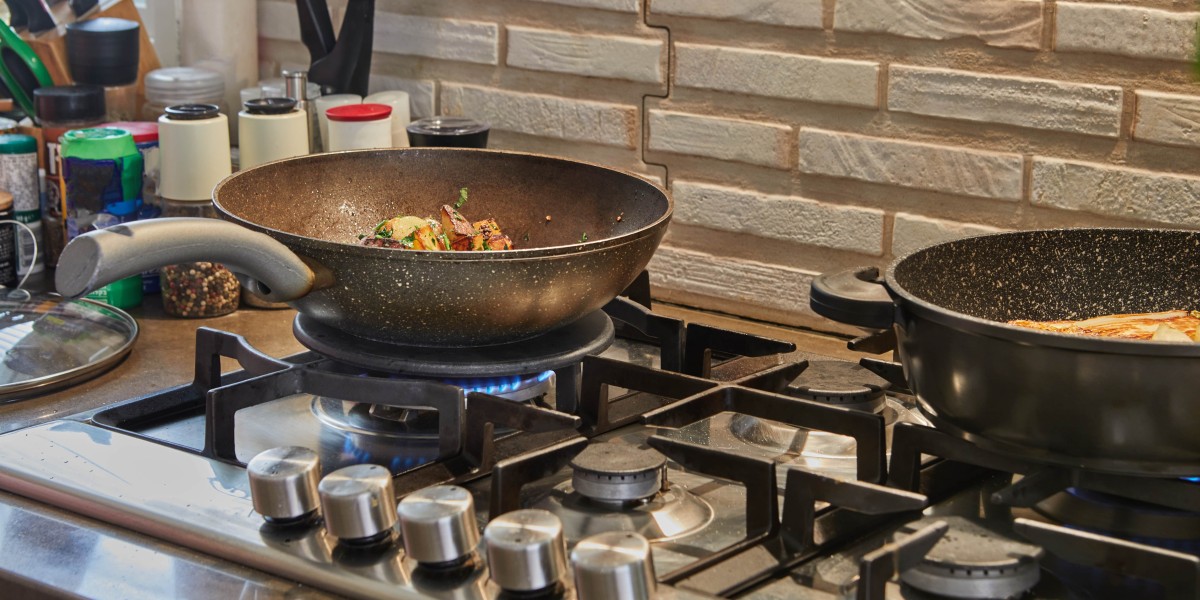The Integrated Kitchen: A Harmonious Blend of Functionality and Aesthetics
In today's hectic world, the kitchen has progressed from a simple cooking space to a multifunctional center that balances with the overall circulation of the home. The integrated kitchen concept is at the forefront of this transformation, integrating aesthetic appeals with performance. This post digs into the principles of integrated kitchens, their advantages, and essential style aspects, guaranteeing you understand what makes this modern kitchen layout so appealing.
What Is an Integrated Kitchen?
An integrated kitchen is designed to perfectly blend with the other living spaces in a home, shunning the traditional separation of the kitchen from the living and dining locations. This approach emphasizes open layout, effective usage of area, and cohesive design to create a unified appearance.

Secret Features of an Integrated Kitchen
Open Layout: The significant function of an integrated kitchen is its openness. Walls between the kitchen, dining, and living locations are frequently eliminated to produce a free-flowing area.
Unified Design Aesthetics: The style of an integrated kitchen frequently reflects the design of the adjacent locations. Cabinets can match the living space furnishings, and color design can be collaborated for a harmonious look.
Practical Zones: While it is open, an integrated kitchen still preserves functional zones-- cooking, preparing, and dining-- to ensure use.
Smart Storage Solutions: Integrated kitchens utilize creative storage choices like pull-out cabinets, concealed appliances, and built-in shelving to keep clutter at bay.
Multi-Use Furniture: Island counter tops, for example, are not simply for prep work however can serve as dining surfaces or common spaces.
Benefits of an Integrated Kitchen
The integration of cooking areas comes up with various benefits:
| Benefit | Description |
|---|---|
| Space Optimization | Takes full advantage of using offered area, specifically in smaller homes. |
| Boosted Social Interaction | Fosters interaction and interaction among member of the family while cooking, dining, or amusing. |
| Increased Natural Light | An open design permits for much better light distribution, making the space feel larger and brighter. |
| Visual Appeal | Produces a more aesthetically attractive living area with a cohesive design. |
| Increased Home Value | Modern, elegant integrated kitchen areas can considerably enhance a property's market price. |
Design Elements to Consider
For homeowners seeking to create an integrated kitchen, a number of elements ought to be thoroughly considered:
Color Scheme: Choose a color scheme that streams throughout the home. Neutral colors are flexible and tend to blend well.
Flooring: Use constant floor covering product. Flow from the kitchen to the living room can be boosted by matching tiles or hardwood.
Lighting: Incorporate layered lighting, consisting of ambient, job, and accent lighting to improve functionality and aesthetic appeals.
Appliances: Select NEFF N50 Bosch Series 8 Built-in Oven with Air Fry Cookology 72L Electric Oven - Multifunction & Convenient with Circotherm Technology (www.ovensandhobs.uk) or panel-ready appliances to maintain a smooth look.
Island or Peninsula: Consider setting up an island or peninsula that can serve numerous functions-- cooking, dining, and socializing.
Sustainable Practices in Integrated Kitchens
As sustainability ends up being a growing issue, integrating environmentally friendly practices into kitchen design can be beneficial. Here are some suggestions:
- Energy-Efficient Appliances: Invest in ENERGY STAR-rated appliances to minimize energy consumption.
- Sustainable Materials: Opt for cabinets made from recovered wood or bamboo, both eco-friendly and elegant.
- Low-Flow Fixtures: Use water-saving faucets and components to promote water preservation.
- Recycling Stations: Designate areas for recycling and composting to encourage sustainable living.
Frequently Asked Questions About Integrated Kitchens
What is the typical expense of an integrated kitchen?
The cost of an integrated kitchen differs commonly, depending upon size, products, and complexity. On average, homeowners can expect to invest in between ₤ 20,000 and ₤ 50,000.
How do I guarantee appropriate ventilation in an integrated kitchen?
Correct ventilation can be accomplished through effective range hoods, windows, and the strategic positioning of exhaust fans to get rid of cooking odors efficiently without interrupting the open circulation of space.
Can integrated cooking areas operate in small homes?
Absolutely. Integrated kitchen areas can make small spaces feel larger and more welcoming by breaking down walls and enabling flexible layouts.
What design style matches an integrated kitchen best?
Integrated kitchen areas can fit a range of designs, consisting of modern, modern, and rustic designs. The key is to keep a cohesive visual throughout the open space.
Are integrated cooking areas more expensive than traditional kitchens?
The total expense depends upon different aspects, ovensandhobs.Uk including design choices and products used. Frequently, integrated styles can be attained within a similar spending plan, particularly when thinking about the worth they include to a home.
An integrated kitchen exemplifies the advancement of living areas in modern homes, merging visual appeals with functionality. By allowing open designs, fostering social interaction, and utilizing wise storage, these kitchen areas supply a desirable environment for cooking, entertaining, and family bonding. As more house owners recognize the many advantages of an integrated kitchen, this design pattern is most likely to continue growing in appeal, reshaping the way we think of our most essential space.








